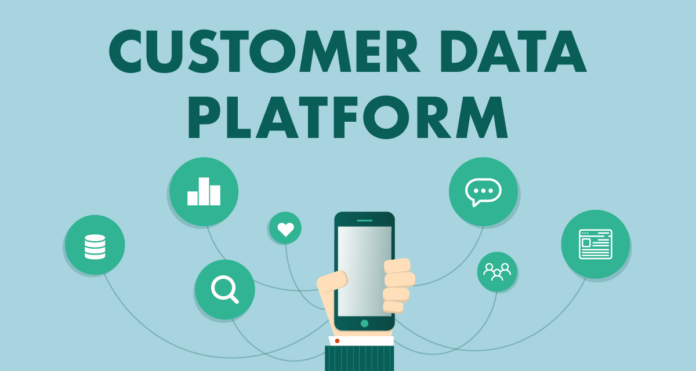Businesses generate massive amounts of data about their customers in a fast-paced, Internet-based environment. But they need help to collect, understand and leverage that data effectively.
CDPs ingest that first-party customer data and standardize it into a persistent, unified customer profile. Then, they share that profile with other marketing systems and processes for a more personalized experience.
Unified Data
Unified data is critical to any successful customer-centric organization. However, unifying data is a complex and challenging process that requires a lot of technology and resources.
To be unified, organizations need a data architecture that unites different sources of information and enables them to be accessed by any business unit. This can be done by leveraging a unified data management (UDM) platform.
UDM drives interdepartmental cooperation by combining all data governance processes in a single storage base. This enables the retrieval of the maximum insights from enterprise-wide data assets, which is essential for transforming the business and addressing regulatory compliance issues.
A unified data architecture is not just a set of technologies; it also requires a shared vision and a clear understanding of the company’s goals. This helps align the technology infrastructure and the data management practices with the organization’s overall business objectives, according to Jerry Campbell, a specialist leader in Deloitte Consulting LLP’s Technology Strategy & Architecture practice.
Businesses have long struggled to leverage their vast consumer data pools to improve customer experiences. The problem has been compounded by disconnected touchpoints and a need for more quality data. With a guide to customer data platforms, retailers can connect these disparate data streams and use them to improve the customer experience.
Real-Time Data
Real-time data enables businesses to make decisions in real-time. This is especially important in industries such as finance, where detecting fraud and halting transactions before they occur saves millions of dollars. It also helps in other areas of the industry, such as marketing, where a company can create tailored content for customers to improve their experience.
Having real-time data makes an impact across every area of the organization. It is a crucial component in driving faster decision-making and better business outcomes, enabling teams to focus on the most critical issues while reducing the cognitive load of data analysis.
For example, a company can use real-time data to spot high performers and support those who need it. These individuals can be recognized for their hard work and offered training or resources to help them succeed.
As business data becomes more complex, there is a growing demand for real-time big data analytics. This requires a system designed to handle the needs of diverse and high-volume data sources.
To address this, companies often turn to specialized solutions. These include hardware and software systems, processor/memory chip combinations or in-database analytics. These can be expensive and difficult to implement, but they can benefit specific applications.
Having real-time data also enables organizations to get a better understanding of their IT infrastructure. This allows them to predict, prevent or detect failing components, service spikes, security threats and other IT infrastructure problems before they cause damage. It can also reduce downtime and costs, providing administrators with the tools to optimize their IT assets.
Personalized Experiences
Personalization is a marketing tactic that can improve various KPIs, including increased engagement, conversions, loyalty, and more. But to deliver personalization at scale requires a solid data foundation.
Businesses should consider a customer data platform when developing a personalized experience. A customer data platform helps companies unify, organize, and analyze a large amount of data from different sources to build a single customer profile.
These profiles are then used to enhance marketing and customer experiences. They allow teams to optimize the timing and targeting of messages, offers, and customer engagement activities, power individual-level personalization, and support behavior analysis.
In addition, a customer data platform makes it easier for teams to access and use unified data across multiple systems. This includes data gathered from e-commerce, CRM, and other data sources.
It also enables companies to create a more holistic picture of the customer journey. This allows brands to provide more personalized experiences, increasing basket size and profitability (share of wallet) and reducing abandoned shopping carts and browsing.
A good customer data platform can unify profiles from all data sources, including transaction and order data, behavioral, and web and mobile data. It also provides quality control protocols that help marketers identify and address missing information, remove duplicate profiles, and cross-check for accuracy.
Enhanced Analytics
A customer data platform is the centralization of a company’s customer data across multiple channels and touchpoints. It collects all data points a customer might interact with, consolidates it into an easily understandable unified customer profile and makes it available to other systems that need it for marketing campaigns, sales and customer service initiatives.
The CDP Institute defines it as “packaged software that creates a persistent, unified customer database accessible to other systems.” It’s different from CRMs and data management platforms (DMP) in that the CDP is a prebuilt system that can ingest and combine all kinds of first-party data to create a unified customer profile.
For example, a customer data platform can pull data from a company’s social media, website, and email. It can also integrate with third-party systems like Facebook and Google Ads to deliver data on campaign results and the effectiveness of retargeting efforts.
Typically, CDPs also incorporate machine learning to predict future customer behavior and create new segments of high-quality audiences. Marketers can use this information to make better, more strategic campaign decisions.
Access to the correct data at the right time is the key to improving marketing campaigns, driving revenue and increasing brand loyalty. The data in a customer data platform helps marketers identify the best paths to purchase, document the types of content shoppers consume before converting and automate the processes that lead to those conversions. It also helps improve customer journey optimization, enabling AI-powered, right-time journey orchestration.















